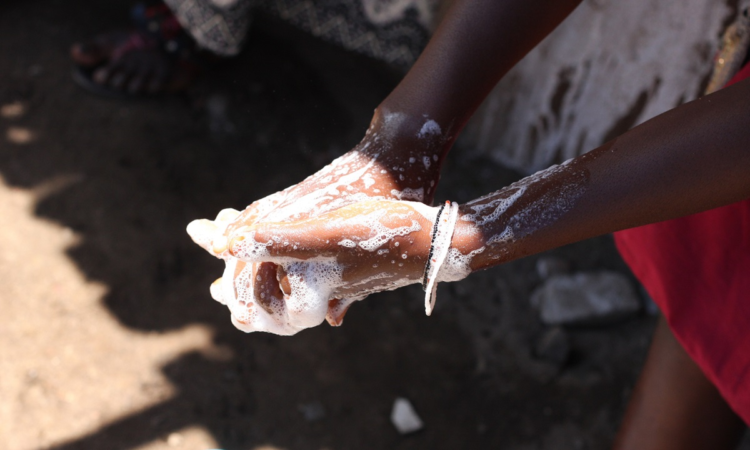Improving access to water, sanitation and hygiene can save 1.4 million lives per year, says new WHO report – World Health Organization (WHO)

Half of the world’s population still does not have adequate access to safe drinking water, sanitation and hygiene (WASH) which could have prevented at least 1.4 million deaths and 74 million disability-adjusted life years in 2019, according to the latest report by the World Health Organization (WHO) and an accompanying article published in The Lancet.
“With growing WASH-related health risks seen already today through conflicts, the emergence of antimicrobial resistance, the re-emergence of cholera hotspots, and the long-term threats from climate change, the imperative to invest is stronger than ever” said Dr Maria Neira, Director, WHO Department of Environment, Climate Change and Health. “We have seen improvements in WASH service levels over the last 10 years, but progress is uneven and insufficient”
Burden of disease attributable to unsafe drinking water, sanitation, and hygiene: 2019 update presents estimates of the burden of disease attributable to unsafe drinking water, sanitation and hygiene for 183 WHO Member States disaggregated by region, age and sex for the year 2019. The estimates are based on four health outcomes – diarrhoea, acute respiratory infections, undernutrition, and soil-transmitted helminthiases.
Diarrhoeal disease accounted for most of the attributable burden, with over one million deaths and 55 million DALYs. The second largest contributor was acute respiratory infections from inadequate hand hygiene, which was linked to 356 000 deaths and 17 million DALYs.
Among children under five, unsafe WASH was responsible for 395 000 deaths and 37 million DALYs, representing 7.6% of all deaths and 7.5% of all DALYs in this age group. This included 273 000 deaths from diarrhoea and 112 000 deaths from acute respiratory infections. These diseases are the top two infectious causes of death for children under five globally.
Important disparities were noted between regions and income groups. More than three-quarters of all WASH-attributable deaths occurred in the WHO African and South-East Asia regions, while 89% of attributable deaths were from low- and lower-middle income countries. However, even high-income countries are at risk, as 18% of their diarrhoeal disease burden could be prevented through improved hand hygiene practices.
While these estimates included four health outcomes for which data were available to quantify the impact, the true burden is likely to be much higher. The impacts of unsafe WASH on health are wide-ranging and go beyond disease by affecting social and mental well-being. In addition, climate change is likely to exacerbate many WASH-related diseases and risks which are not fully captured in the present estimates.
To reduce the WASH-attributable burden of disease, WHO urges governments to take the following actions with support from UN agencies, multilateral partners, the private sector and civil society organizations:
“It is clear that inadequate access to safe water, sanitation, and hygiene services continues to pose a significant, and preventable, health risk, particularly to the most vulnerable populations,” said Mr. Bruce Gordon, Head, WHO Water, Sanitation, Hygiene and Health Unit. “The health benefits, as quantified in the report, are immense. Prioritizing those most in need is not just a moral imperative; it is key to addressing the disproportionate disease burden in low and middle-income countries and among marginalized groups in high-income countries.”
To support governments, WHO also today released a new tool to model disease impacts from different WASH scenarios. The tool will foster informed policy-making, guide targeted interventions, and support strategic resource allocation for WASH programming.
The burden of disease associated with unsafe WASH is still substantial. This analysis estimates the WASH-attributable burden of disease that can be prevented by meeting SDG targets 6.1 and 6.2. While comprehensive data on the SDG indicators used to track these targets still have important limitations, our estimates demonstrate the added value of collecting information on these service levels in order to reflect more fully the burden of disease associated with unsafe WASH.
Access the report here and the Lancet article here
Access key data here
Access the country analytical tool here
Dedicated to the well-being of all people and guided by science, the World Health Organization leads and champions global efforts to give everyone, everywhere an equal chance at a safe and healthy life. We are the UN agency for health that connects nations, partners and people on the front lines in 150+ locations – leading the world’s response to health emergencies, preventing disease, addressing the root causes of health issues and expanding access to medicines and health care. Our mission is to promote health, keep the world safe and serve the vulnerable. www.who.int
Visit www.who.int and follow WHO on Twitter, Facebook, Instagram, LinkedIn, TikTok, Pinterest, Snapchat, YouTube.
WHO media inquiries: [email protected]
News







